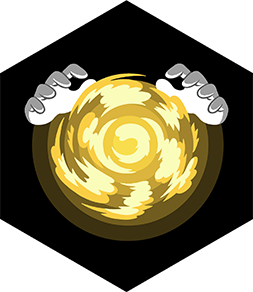Your Favorite Magician
Create and perform three simple magic tricks using cards, coins, and homemade props. Practice sleight-of-hand, audience engagement, and stage presence.



Step-by-step guide to create and perform Your Favorite Magician
Step 1
Clear a small performance area and put one chair for your audience so you have a neat stage to work on.
Step 2
Decorate the paper cup using the colouring materials so it looks like a magical prop.
Step 3
Place the pom-pom on the table and practice sliding it secretly under the cup while talking to distract your audience.
Step 4
Pick one coin and practice the French Drop vanish by holding the coin between thumb and fingers and pretending to take it with the other hand while you keep it in your palm.
Step 5
Pull 21 cards from the deck and place them in a neat stack to prepare your card trick.
Step 6
Deal the 21 cards face down into three piles of seven cards each so they are ready to use.
Step 7
Ask a helper to silently choose one pile and then collect the piles with the chosen pile placed in the middle; repeat the deal-and-collect process two more times to practice the routine.
Step 8
Spread the 21 cards face down and count to find the 11th card so you can reveal the spectator’s chosen card confidently.
Step 9
Practice a short fun opening line and a bow so you feel brave and excited before you start each trick.
Step 10
Do a full dress rehearsal performing the coin vanish the cup-and-pom-pom reveal and the 21-card trick in that order so your timing and patter are smooth.
Step 11
Perform your three magic tricks for family or friends with a big smile and a final bow.
Step 12
Share a video or description of your finished magic show on DIY.org so everyone can see your magician skills.
Final steps
You're almost there! Complete all the steps, bring your creation to life, post it, and conquer the challenge!


Help!?
What can I use if I don't have a pom-pom, paper cup, or a full deck of cards?
Replace the pom-pom with a cotton ball or small soft toy, use a plastic cup, paper bowl, or small jar instead of the paper cup and decorate it with your colouring materials, and make 21 cards by cutting plain paper and drawing simple card faces if you don't have a deck.
My pom-pom won't slide secretly under the cup or I keep dropping the coin during the French Drop—how can I fix these problems?
For the pom-pom, slightly tip the paper cup with a thumb on its rim and practice the secret slide on the table while talking to distract the audience, and for the French Drop keep the coin pressed to your palm with curled fingers, rehearse the false transfer in front of a mirror, and slow your patter until the move feels smooth.
How can I change the tricks to suit younger or older kids?
For younger children use a bigger cup and large foam coin and shorten the card routine to nine cards or let a helper pick a pile, while older kids can add sleights, more elaborate patter, and the full 21-card deal-and-collect routine from the instructions.
How can we make the show more impressive or personalize it?
Create a magician name and costume, decorate the paper cup and stage chair, add simple sound effects or lighting during the cup-and-pom-pom reveal and 21-card finale, and record your full dress rehearsal to share on DIY.org.
Watch videos on how to create and perform Your Favorite Magician
DAVID BLAINE'S TOP 7 MAGIC TRICKS FINALLY REVEALED
Facts about magic tricks and performance for kids
🃏 A standard deck has 52 cards, and simple moves like the double lift let you do dozens of neat card tricks.
🪙 Coin magicians use a move called palming to secretly hold coins; with practice a coin can 'vanish' in under a second.
🎩 Magic has been performed for thousands of years — ancient Egyptian tomb paintings show cup-and-ball tricks over 3,000 years ago.
🎭 Stage presence matters — many magicians say a trick is about half technique and half how you tell the story to your audience.
🕵️♂️ Harry Houdini became world-famous for daring escapes, often performing stunts with locks, chains, and underwater trunks.
How do you do the 'Your Favorite Magician' activity?
What materials do I need for the 'Your Favorite Magician' activity?
What ages is this activity suitable for?
What are the benefits of doing the 'Your Favorite Magician' activity?


One subscription, many ways to play and learn.
Only $6.99 after trial. No credit card required



